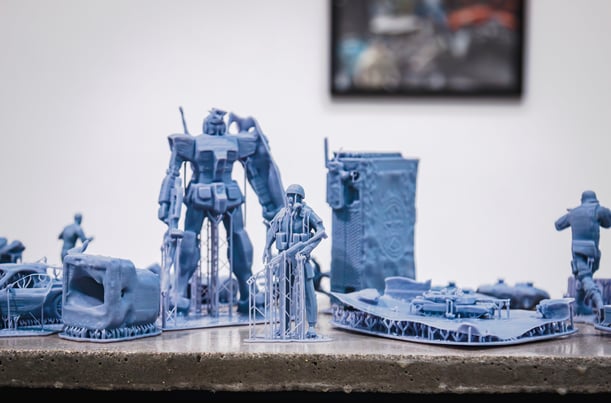Bio
Jonathan Godinez is an interdisciplinary Mexican-American artist born and raised in Tijuana, Mexico. At the age of eleven, he and his family moved to Riverside California in search of a better future. He attended Norco and Riverside City College for his foundational studies before transferring to California State University, Long Beach, where he earned his bachelor's degree in Studio Arts in 2021. Jonathan continued his art education and earned a Master of Fine Arts degree from Claremont Graduate University in 2024.
Jonathan’s interest in art was first sparked by the vibrant graffiti murals that decorated the streets of his childhood neighborhood. This early exposure fostered a deep appreciation for street art, which continues to influence much of his work today. While studying at Cal State Long Beach, he was introduced to woodworking and sculpture, discovering a passion for creating with his hands that rivaled his love for drawing and painting. This newfound interest led him to explore 3D modeling and printing, where he found he could design intricate sculptures on the computer and bring them to life as physical 3D prints. Halfway through his master’s degree, Jonathan decided to pause his painting work to focus on digital 3d scanning and modeling, resulting in an impressive collection of 3D-printed sculptures that added up to his Thesis.


Artist Statement
As an artist navigating the intersections of traditional craftsmanship and cutting-edge technology, Jonathan Godinez's practice is a dialogue between the tangible and the virtual, the hand and the machine. His work stands at the intersection of 3D software, and traditional art making, exploring how these diverse mediums can coexist, enhance, and challenge one another to create multifaceted expressions of contemporary experience.
Complementing this is Jonathan Godinez's use of 3D scanning, a tool that captures the essence of real-world objects and environments, translating them into digital data. This technology enables him to preserve the nuances of physicality and context, allowing for a profound exploration of the relationship between the scanned reality and its digital representation. By manipulating these scanned forms within a virtual realm, Jonathan can interrogate the boundaries between authenticity and simulation, reality and abstraction. The result is a body of work that reflects a deep engagement with the layers of perception and meaning inherent in our interactions with the material world.

